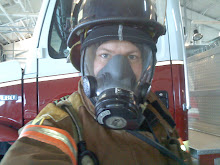
My first post is about one of several projects I am doing for TLEW: A real train whistle (Train Horn is more technically accurate). Yesterday I removed these horns from Coach 404 (the frontmost coach on the Blue Bird train). When I got them home I promptly hooked them up to my air compressor, opened the valve and... Nothing happened!
Despite not yet having eaten supper I proceeded to tear the diaphram assemblies (the actual noisemaking part of the horn) and found one filled with mud dauber nests, one full of spider nests and the third and fourth just plain filthy. I quickly cleaned them up and tested them again, and one horn then started working. By then I was cold and tired, and gave up for the day.
Today when I got home I went back to work. I cleaned all four diaphrams with solvent to remove the oils and dirt from them before testing them one at a time. Once all three chimed nicely I went to work on repairing the bells (trumpets). Notice the silver band on the longest bell? Yes that's tape! That bell was literally broken in half when I recieved it, the tape is just there for testing purposes. Later I will solder the two halves back together.
In this post is a test video of the horn... Yes it really is that loud! Since one of the trumpets is missing I converted the horn assembly to a three-chime by plugging the air inlet to the damaged diaphram. The result: It sounds like there's a train rolling through Texas! Of course the REALLY impressive part is the fact that I tested this horn on my grandma's air compressor at 100 PSI, which is pretty close to the train brake pressure of 90 PSI. The small air tank can't flow enough air to keep up with one chime (horn assembly), let alone three. However this is not the case on the train, where the air supply is both less restricted and virtually unlimited!
Obviously I'm not done. I still need to see about straightening up the one bell, I need to solder up the other, and I need to strip off all of the old paint and repaint the whole thing, before fabricating a mounting bracket. Once all that's done it'll be ready to be mounted to Coach 408 (the rearmost coach on the train, which acts as the head-of-train when the train is backing up).

4 comments:
Dude, that's awesome! You should get a microphone and sample that puppy!
That's a cool project! Sounds like a lot of work, but fun. I'll bet it's pretty cool to have a train horn in your shop!!
I didn't know your nick-name was "hot rod."
train whistle horn Train air horns come in all sizes, shapes and sounds. They are normally attached to a locomotive to sound the approach of an on-coming train. The conductor of a train will sound the horn when approaching a populated area or railroad crossing to alert people nearby that it is coming
This range of maximus offerings for sale can be found on train horns delivered. This range of horns has dB levels that begin from 165dB, 170dB, 175dB and 180dB
Post a Comment